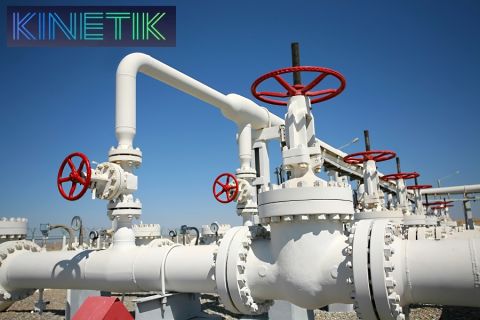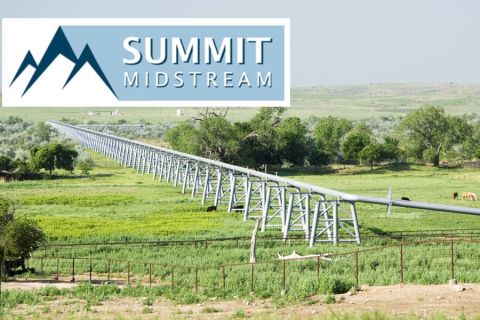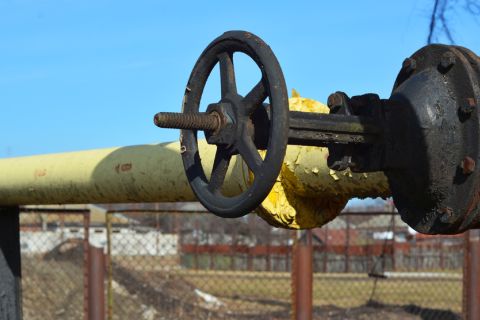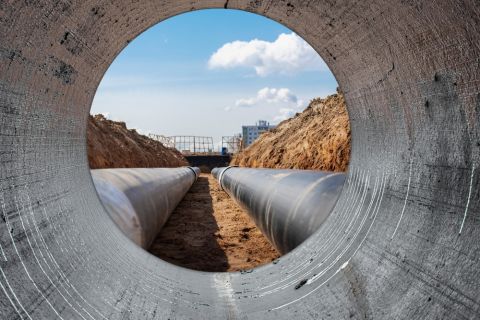Managed-pressure drilling (MPD) is a class of techniques that allows management of annular pressure profile through a combination of controlling wellhead pressure (or backpressure) along with the drilling fluid’s density and flow rate. As a result of the ability to manipulate backpressure, MPD offers the capability to control a kick dynamically without shutting in.
Once an influx is detected during MPD, one of the most important decisions is whether to control the well dynamically or to revert to conventional well control techniques. Dynamic well control is only applicable up to a certain size, rate, and duration of influx. The influx must be sufficiently small that it is within the limits of MPD surface equipment to circulate the influx out safely while maintaining well control. This decision hinges on quantification of peak surface pressures and flow rates. When influx characteristics are within equipment limits, dynamic well control offers a swift response and can significantly reduce non-productive time.

FIGURE 1. This example of proposed dynamic well control response shows that after drilling into a high-pressure, permeable zone containing methane, drilling is stopped and the proposed response is initiated. As backpressure (WHP) is manipulated to force flow out to be equal to flow in (Q), bottomhole pressure (BHP) increases and influx flow into the well bore stops. (Graphs courtesy of Blade Energy Partners)
How do you know when the kick has stopped? After dynamic well control is initiated, it remains to define a process whereby it can be determined when influx has ceased so that gas in the well bore can be safely circulated out of the system while disallowing further influx.
What about compressibility?
Throughout this work, an increase in flow out of the system is considered the primary indicator of an influx. That is, when volumetric flow rate of drilling fluid exiting the annulus ( Q) is greater than that entering the drill pipe (Q), it is assumed that an influx is occurring. Although overly simplified, an easy to implement response to this situation is to increase backpressure to force flow continuity (Q= Q).
The condition of volumetric flow continuity is sometimes taken to imply influx cessation. However, for this to be true, it must be assumed that the fluid in the system drilling fluid is incompressible, and the influx volume is insignificant enough that the overall annular fluid may be considered incompressible.
In reality, compression or expansion of in situ drilling and influx fluid within the well bore will occur during dynamic well control. The rate of compression or expansion of in situ fluid contributes to flow exiting the well bore. If the rate of volume change of in situ fluid is significant, Q= Qwill no longer imply influx cessation.

FIGURE 2. The PTP for the proposed dynamic well control response steadies out at a constant, negative value when the influx is stopped.
It is important to develop robust and reliable criteria to determine when a kick is stopped during dynamic well control that adequately compensates for fluid compressibility. This is of particular importance when the influx is gas, adding further to wellbore fluid compressibility.
Approach
In this work, an analytical approach is used to show that fluid compressibility has a significant effect on whether Q= Qimplies influx cessation. A control volume approach with mass flow rate balance is used to examine the contribution of fluid compressibility to flow exiting the well bore. Based on the resulting conclusions, a new dynamic MPD well control approach is proposed.
Similar to some current industry dynamic well control responses, once an influx is detected, the proposed response involves aggressively increasing back-pressure to reduce flow out until equal to flow in, followed by maintaining this condition of flow continuity for some time. By accounting for the effects of compressibility, the proposed method augments this response to include definition of the appropriate duration for maintaining Q= Q.
Indeed, that Q= Qmust be maintained for a period of time may be arrived at through experience. In this case, the duration for this condition will be arbitrarily chosen based on conservatism and experience. However, this approach allows no confirmation that the influx has ceased to flow. A rigorous and reliable procedure is needed to determine the point of influx cessation.
It is proposed that the answer lies in pressure-based signatures developed to determine the moment of influx cessation. These signatures designate the moment at which the influx stops, while maintaining Q= Q.
A new term, coined the pressure transfer parameter (PTP), represents the difference between wellhead and bottomhole pressures. This transient, non-dimensional, scaled parameter represents a comparison of the pressure change within the annulus at a particular time instant during the period of interest to the pressure change in the annulus at steady-state conditions before the influx was taken. The PTP contains useful information about the state of influx during the dynamic well control process.
At this stage of the research, simplified assumptions include a vertical well bore and ignore the effects of lost circulation, wellbore ballooning, gas dissolution, and temperature changes. Another important requirement is that accurate flowmetering using a Coriolis meter is in place.
Current research
Current research, which will most likely be presented in 2013, further develops and refines the previous conclusions. This subsequent work includes a completely different analytical approach based on conservation of mass and momentum through a control volume. The result is a simple equation describing the system and state of influx, which is based entirely on easily obtainable parameters. The consistency in conclusions between the new and existing research is remarkable and adds confidence that the research is of value to the industry.
The current research offers mathematical support for the previous analytical conclusions. The new research shows that a single, pressure-based signature helps determine when the influx stops. In the previous work, several pressure signatures were determined to be necessary. However, it was not proven that any individual signature, or even the whole set of signatures, was sufficient to ensure influx cessation. This new, more rigorous work significantly adds to the level of assurance that a kick has actually been controlled while employing the proposed dynamic well control response during MPD operations.
Another important subject of the current research is verification of the existing theories through the use of retrospective case study data.
Further work is ongoing to refine the proposed dynamic well control approach and to extend its applicability to other well control situations and techniques.
Acknowledgement
This article is based on a paper published at the 2012 IADC/SPE Drilling Conference & Exhibition, SPE 151392, “An Improved Dynamic Well Control Response to a Gas Influx in Managed Pressure Drilling Operations,” (Bacon, W., Blade Energy Partners, et al.)
Recommended Reading
Kinetik Holdings Enters Agreement to Pay Debt
2024-04-04 - Kinetik Holdings entered an agreement with PNC Bank to pay down outstanding debt.
Summit Midstream Launches Double E Pipeline Open Season
2024-04-02 - The Double E pipeline is set to deliver gas to the Waha Hub before the Matterhorn Express pipeline provides sorely needed takeaway capacity, an analyst said.
Summit Midstream Sells Utica Interests to MPLX for $625MM
2024-03-22 - Summit Midstream is selling Utica assets to MPLX, which include a natural gas and condensate pipeline network and storage.
Kinder Morgan Sees Need for Another Permian NatGas Pipeline
2024-04-18 - Negative prices, tight capacity and upcoming demand are driving natural gas leaders at Kinder Morgan to think about more takeaway capacity.
Targa Resources Forecasts Rising Profits on 2024 Exports
2024-02-20 - Midstream company Targa Resources reports a record fourth quarter in volumes and NGL fractionation.





